All the contesting candidates have promised the implementation of Article 244(A) of the Constitution to create an autonomous ‘state within a state’ in Assam’s tribal-majority Diphu Lok Sabha constituency.
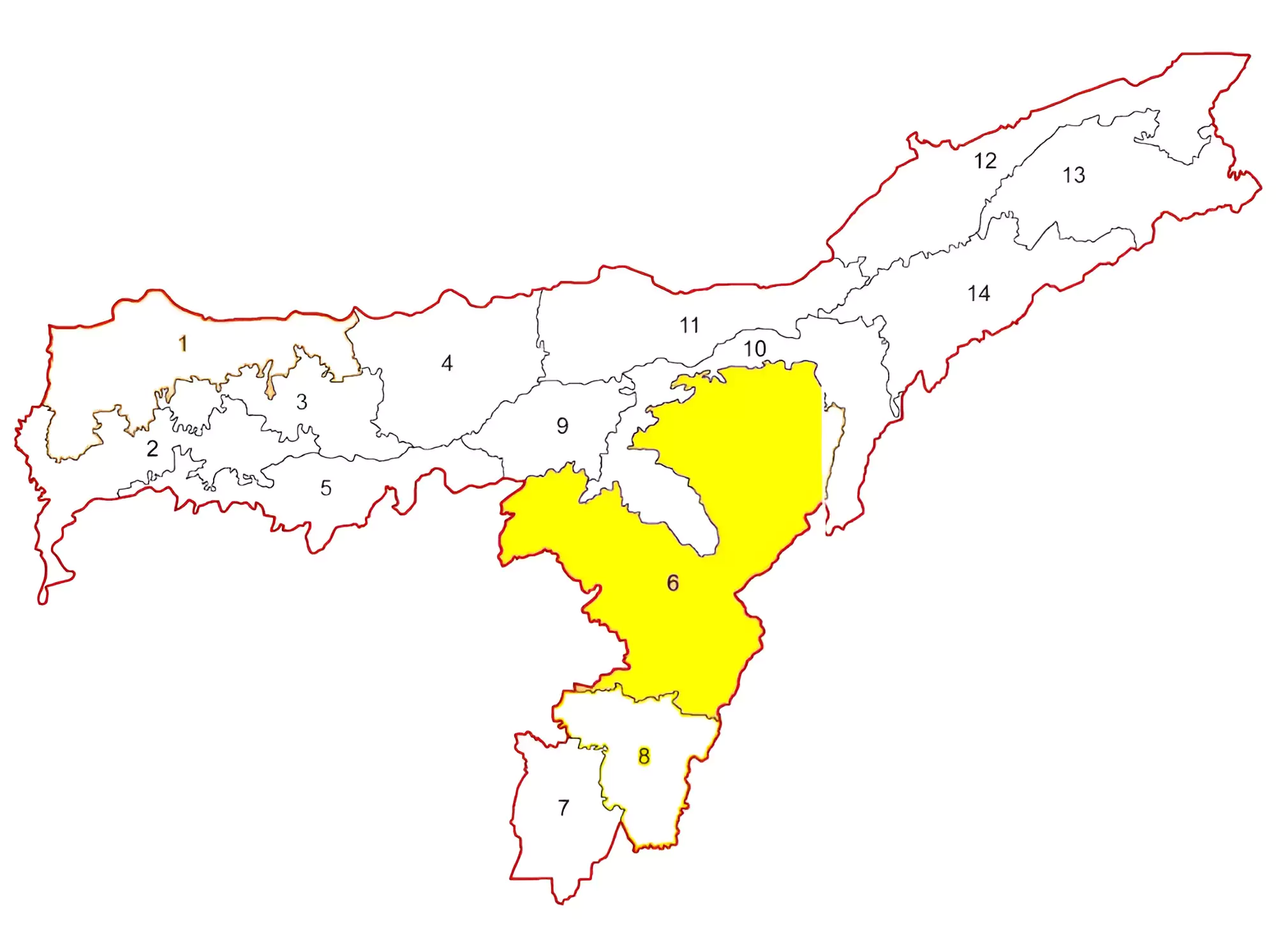
Diphu is the most sparsely populated constituency of Assam’s 14 Lok Sabha constituencies, with a voter count of just 8.9 lakh.
Article 244(A) of the Constitution
|
|---|
This Schedule contains provisions regarding the administration of tribal areas in the states of Assam, Meghalaya, Tripura and Mizoram.
| Must Read | |
| NCERT Notes For UPSC | UPSC Daily Current Affairs |
| UPSC Blogs | UPSC Daily Editorials |
| Daily Current Affairs Quiz | Daily Main Answer Writing |
| UPSC Mains Previous Year Papers | UPSC Test Series 2024 |
New research has found a rich microbial biosphere buried 13 feet (4 meters) beneath the hot surface of the Atacama Desert in Chile.
| Yungay is the driest, and the most sterile, place on Earth. There is virtually no life on the surface of this region of the Atacama desert, in Chile. |
|---|
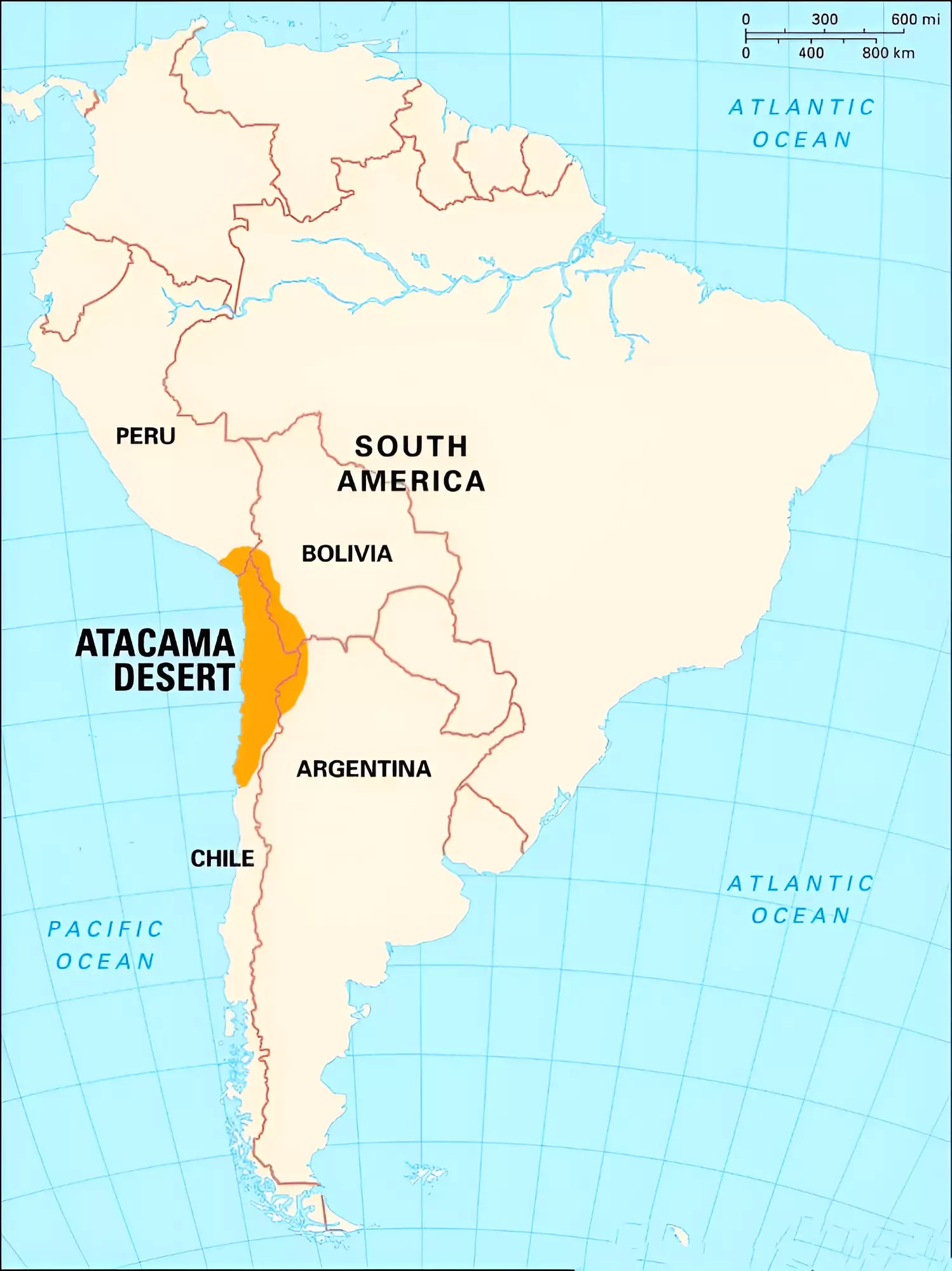
| Must Read | |
| NCERT Notes For UPSC | UPSC Daily Current Affairs |
| UPSC Blogs | UPSC Daily Editorials |
| Daily Current Affairs Quiz | Daily Main Answer Writing |
| UPSC Mains Previous Year Papers | UPSC Test Series 2024 |
Recently, A study published in the Journal ‘Mausam’ by India Meteorological Department has revealed a significantly decreasing trend in solar power generation potential in the country and has suggested use of more efficient equipment to deal with the situation.
The study titled “Understanding the climatology and long-term trends in solar radiation using ground based in-situ observations in India,” published by IMD.
Solar Radiation:
|
|---|
Solar Energy
Solar Energy In india:
|
|---|
| Must Read | |
| NCERT Notes For UPSC | UPSC Daily Current Affairs |
| UPSC Blogs | UPSC Daily Editorials |
| Daily Current Affairs Quiz | Daily Main Answer Writing |
| UPSC Mains Previous Year Papers | UPSC Test Series 2024 |
The United Nations Conference on Trade and Development (UNCTAD) announced its landmark rebranding as “UN Trade and Development”, commemorating its 60th anniversary this year.
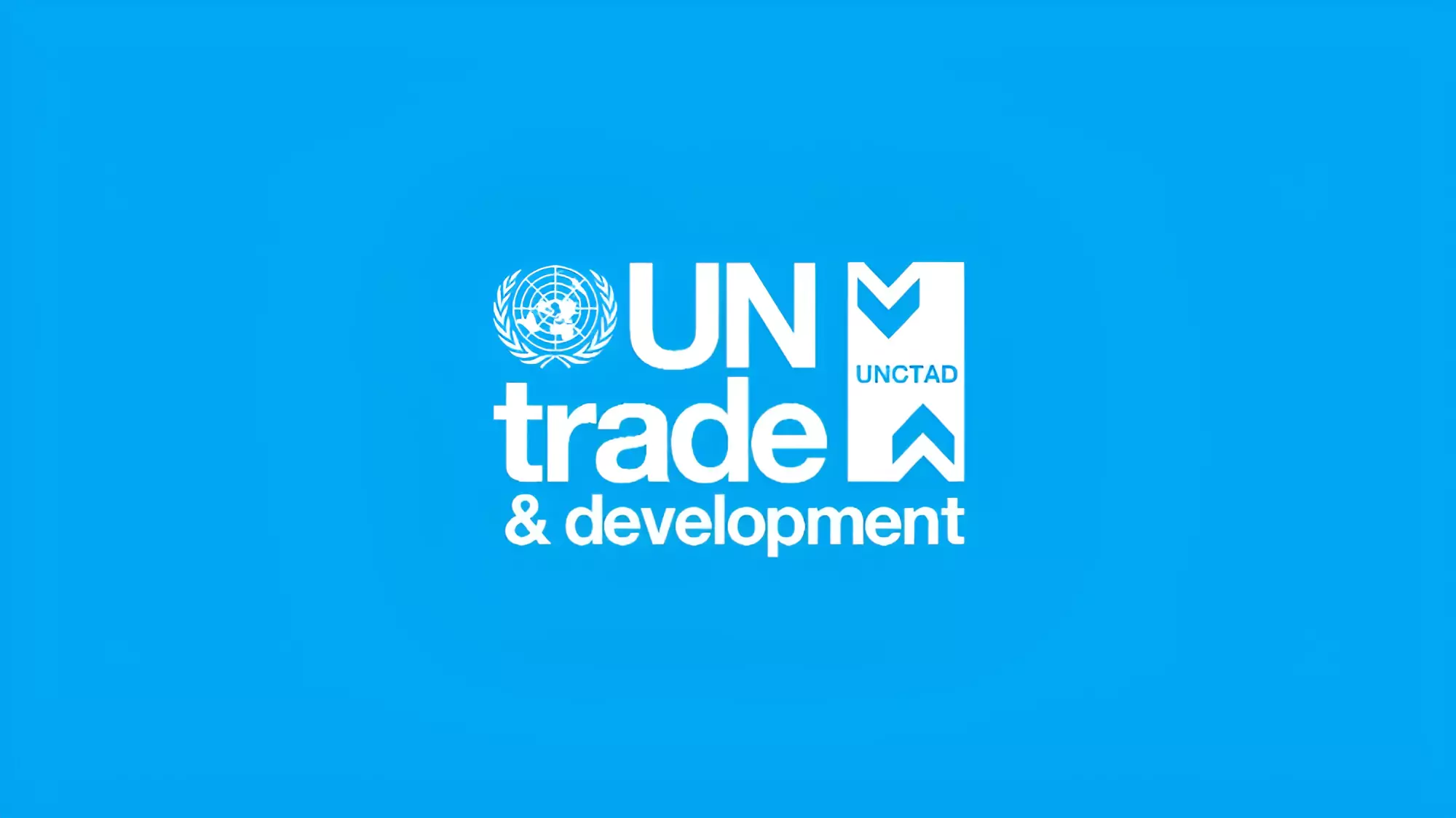 Objective: To maximize the benefits of globalization and liberalization while reducing the costs to the weaker economies.
Objective: To maximize the benefits of globalization and liberalization while reducing the costs to the weaker economies.
| Must Read | |
| NCERT Notes For UPSC | UPSC Daily Current Affairs |
| UPSC Blogs | UPSC Daily Editorials |
| Daily Current Affairs Quiz | Daily Main Answer Writing |
| UPSC Mains Previous Year Papers | UPSC Test Series 2024 |
The Shanghai Cooperation Organisation (SCO) Defence Ministers meeting took place in Astana, Kazakhstan.
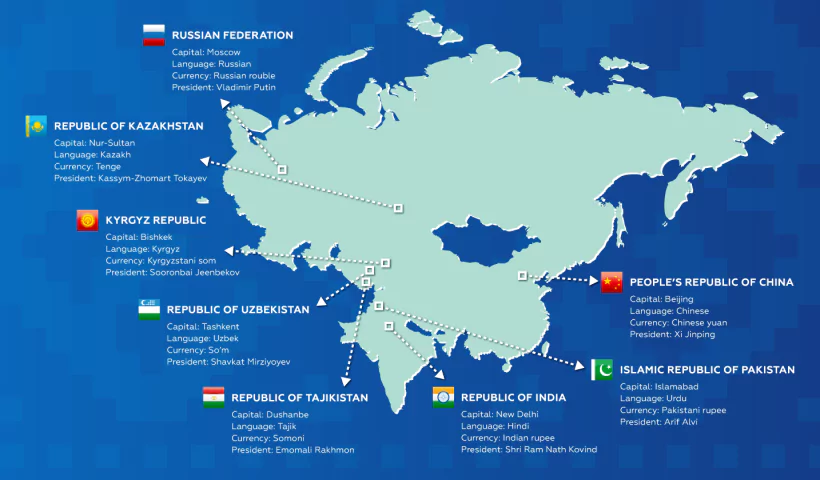 Following the accession of Uzbekistan to the organization in 2001, the Shanghai Five was renamed the SCO.
Following the accession of Uzbekistan to the organization in 2001, the Shanghai Five was renamed the SCO.
| Must Read | |
| NCERT Notes For UPSC | UPSC Daily Current Affairs |
| UPSC Blogs | UPSC Daily Editorials |
| Daily Current Affairs Quiz | Daily Main Answer Writing |
| UPSC Mains Previous Year Papers | UPSC Test Series 2024 |
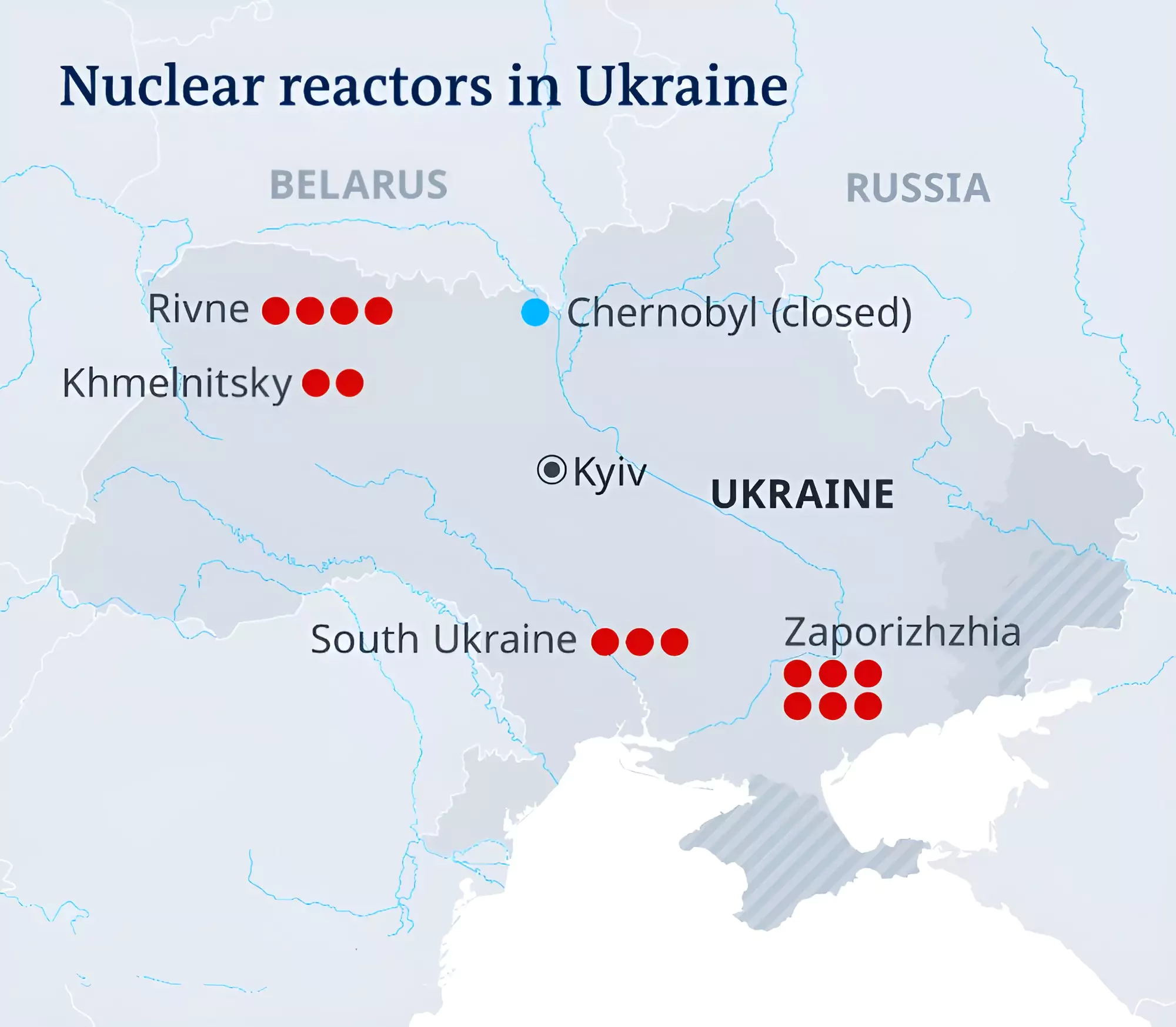
The Chernobyl disaster, which occurred on April 26, 1986, is still a matter of debate and disagreement about who or what was to blame for the Chernobyl disaster.
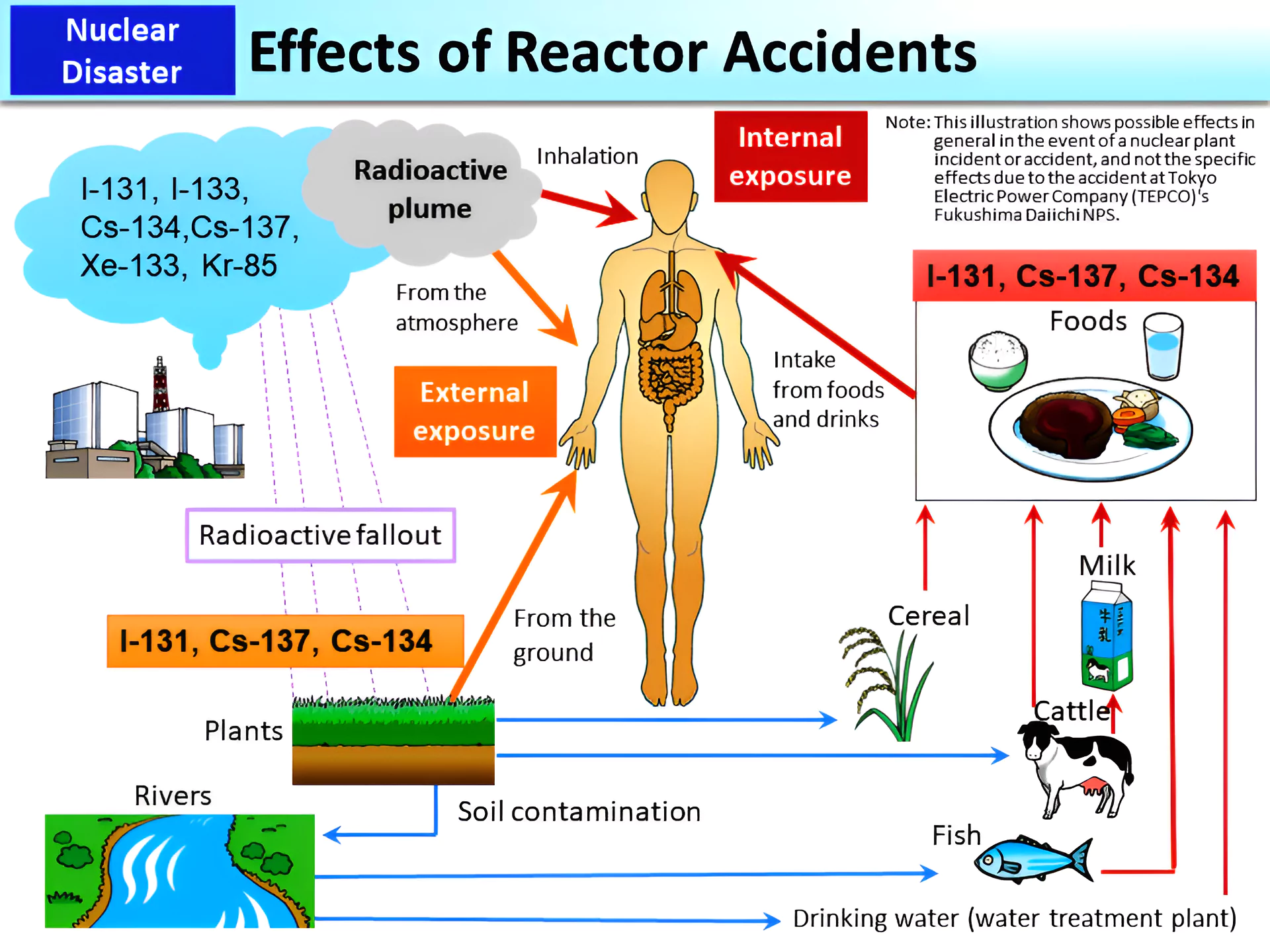
The Chernobyl disaster is blamed on a combination of factors including:
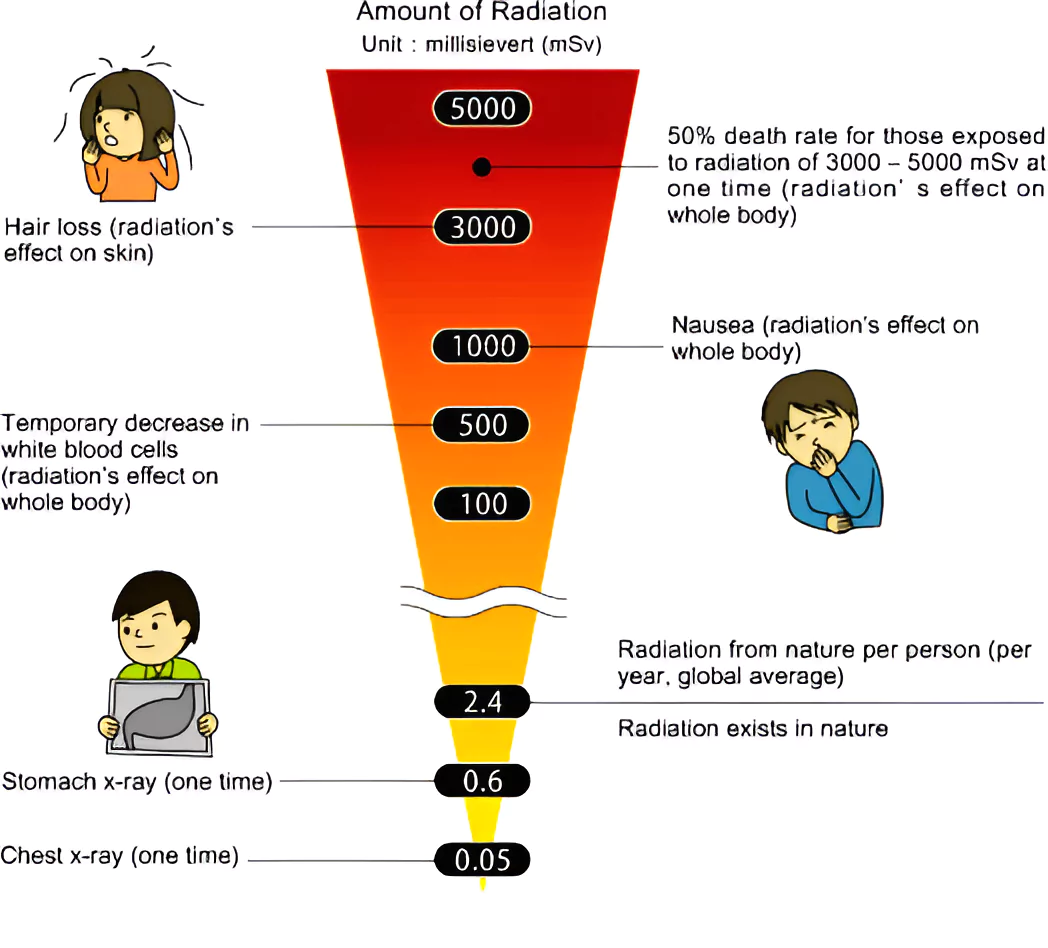 Flawed reactor design: The design of the RBMK reactor used at Chernobyl had inherent safety issues that contributed to the severity of the accident.
Flawed reactor design: The design of the RBMK reactor used at Chernobyl had inherent safety issues that contributed to the severity of the accident.Here are several international conventions and agreements, along with international and regional initiatives, that work to ensure nuclear safety and manage safe radioactive discharge.
India’s Initiatives:
|
|---|
| Must Read | |
| NCERT Notes For UPSC | UPSC Daily Current Affairs |
| UPSC Blogs | UPSC Daily Editorials |
| Daily Current Affairs Quiz | Daily Main Answer Writing |
| UPSC Mains Previous Year Papers | UPSC Test Series 2024 |
The United States criticized Russia for vetoing a U.N. Security Council resolution regarding the Outer Space Treaty.
Other UN treaties governing Outer Space:
India has signed all the above treaties but ratified only three. India has signed the Moon Agreement but has not ratified it. |
|---|
The United Nations Outer Space Treaty is an international agreement binding member states to only use outer space for peaceful purposes.
About UN Security Council
Non-permanent member: Elected for two-year terms by the General Assembly. Veto: A “No” vote from one of the five permanent members blocks the passage of the resolution. Presidency: The Security Council has a rotating Presidency, changing every month. (alphabetical Order). |
|---|
| Must Read | |
| NCERT Notes For UPSC | UPSC Daily Current Affairs |
| UPSC Blogs | UPSC Daily Editorials |
| Daily Current Affairs Quiz | Daily Main Answer Writing |
| UPSC Mains Previous Year Papers | UPSC Test Series 2024 |
Recently, Indian Renewable Energy Development Agency (IREDA) was granted ‘Navratna’ status by the Department of Public Enterprises.
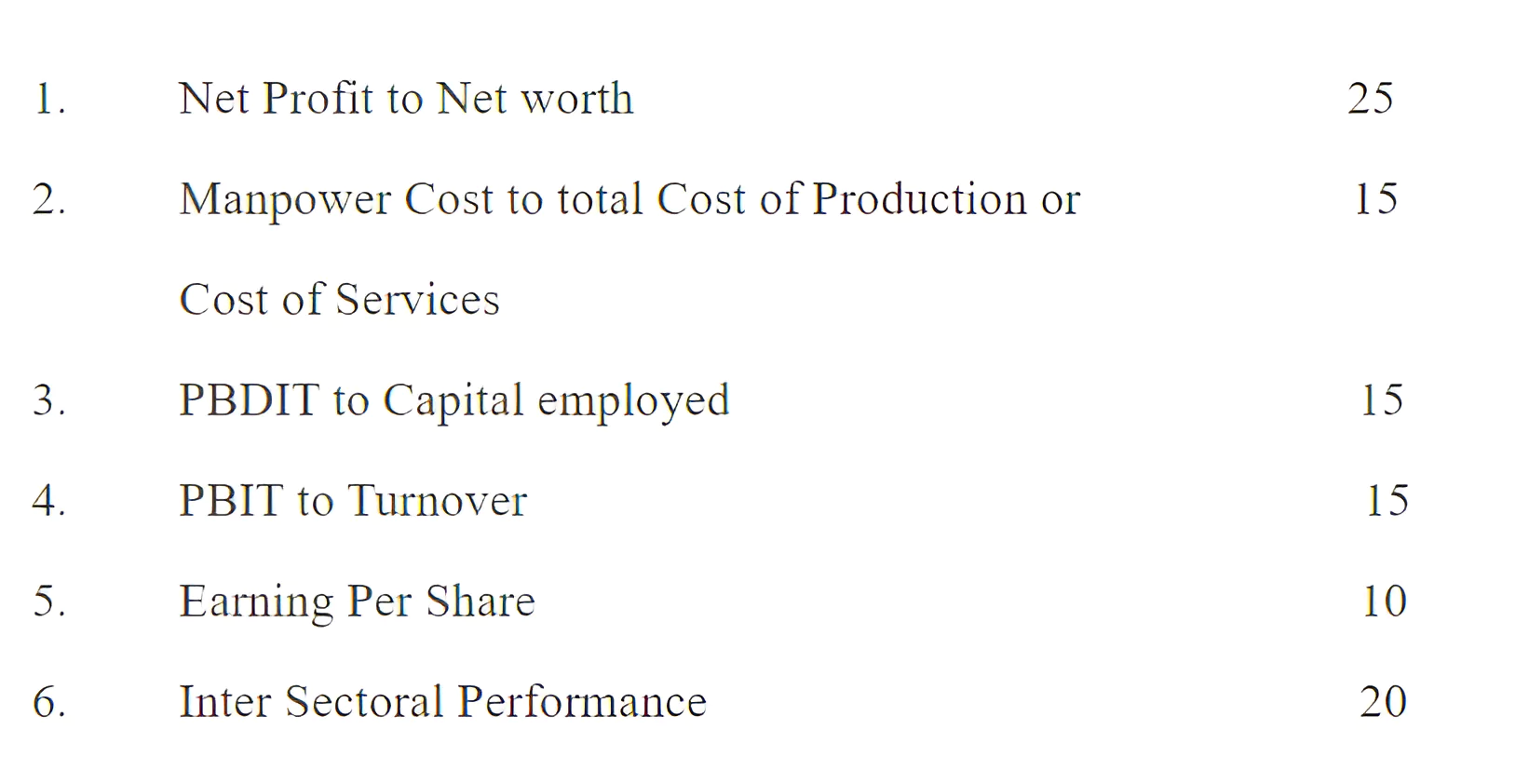 For a company to achieve Navratna status, it must report a net profit of more than Rs 5,000 crore for three consecutive years, and maintain an average annual turnover of Rs 25,000 crore for three years, or have an annual average net worth of over Rs 15,000 crore for three years.
For a company to achieve Navratna status, it must report a net profit of more than Rs 5,000 crore for three consecutive years, and maintain an average annual turnover of Rs 25,000 crore for three years, or have an annual average net worth of over Rs 15,000 crore for three years.
| Must Read | |
| NCERT Notes For UPSC | UPSC Daily Current Affairs |
| UPSC Blogs | UPSC Daily Editorials |
| Daily Current Affairs Quiz | Daily Main Answer Writing |
| UPSC Mains Previous Year Papers | UPSC Test Series 2024 |
Recently, the Supreme Court upheld the electronic voting machine (EVM) system of polling and refused a plea to revive paper ballots.
| Relevance For Prelims: Election System In India, EVM Machine: Electronic Voting Machine, Election Commission Of India, Voter Verifiable Paper Audit Trail Machine
Relevance For Mains: Issues with EVM-VVPAT machines and Challenges associated with Election Commission. |
|---|
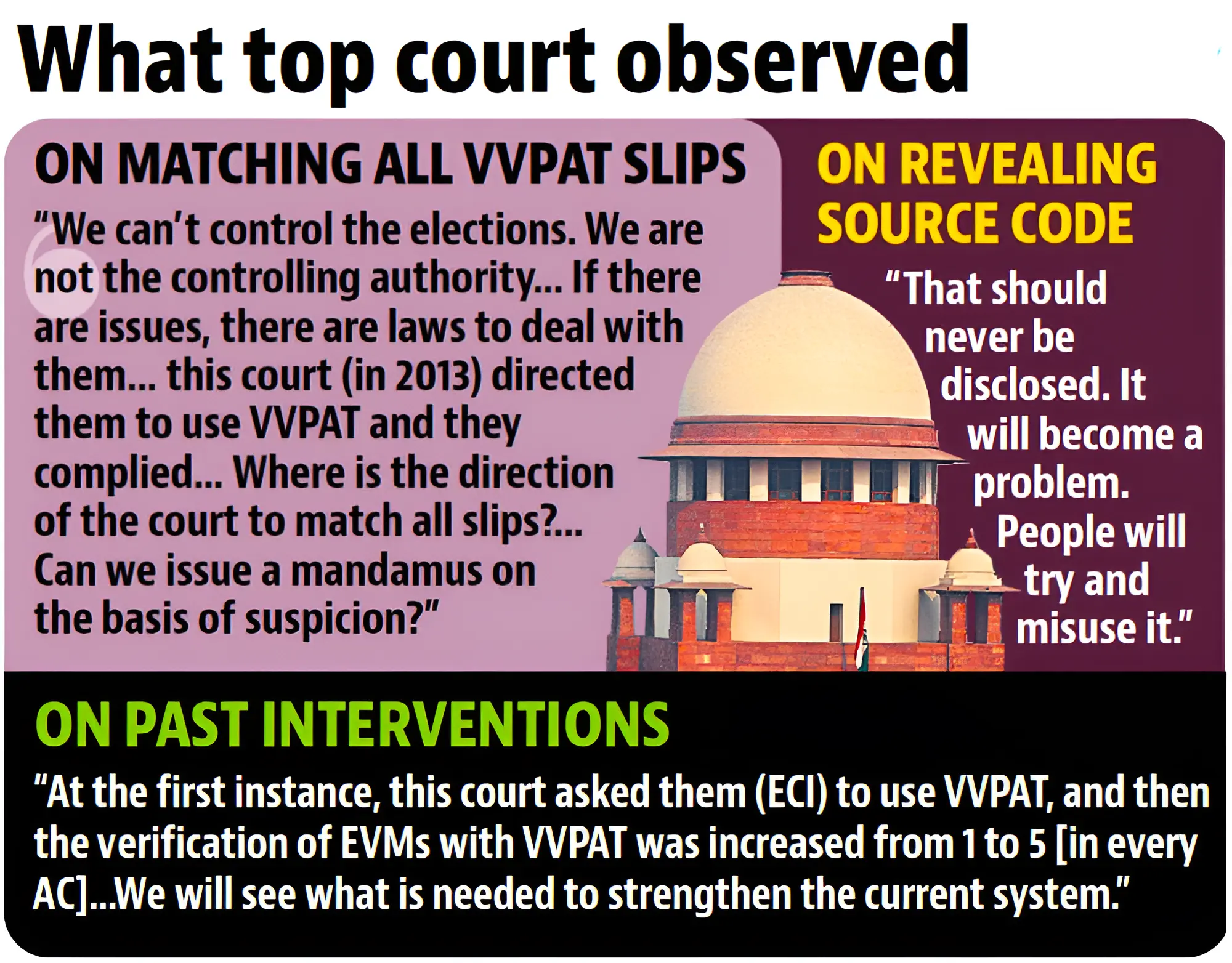
About Association for Democratic Reforms (ADR):
|
|---|
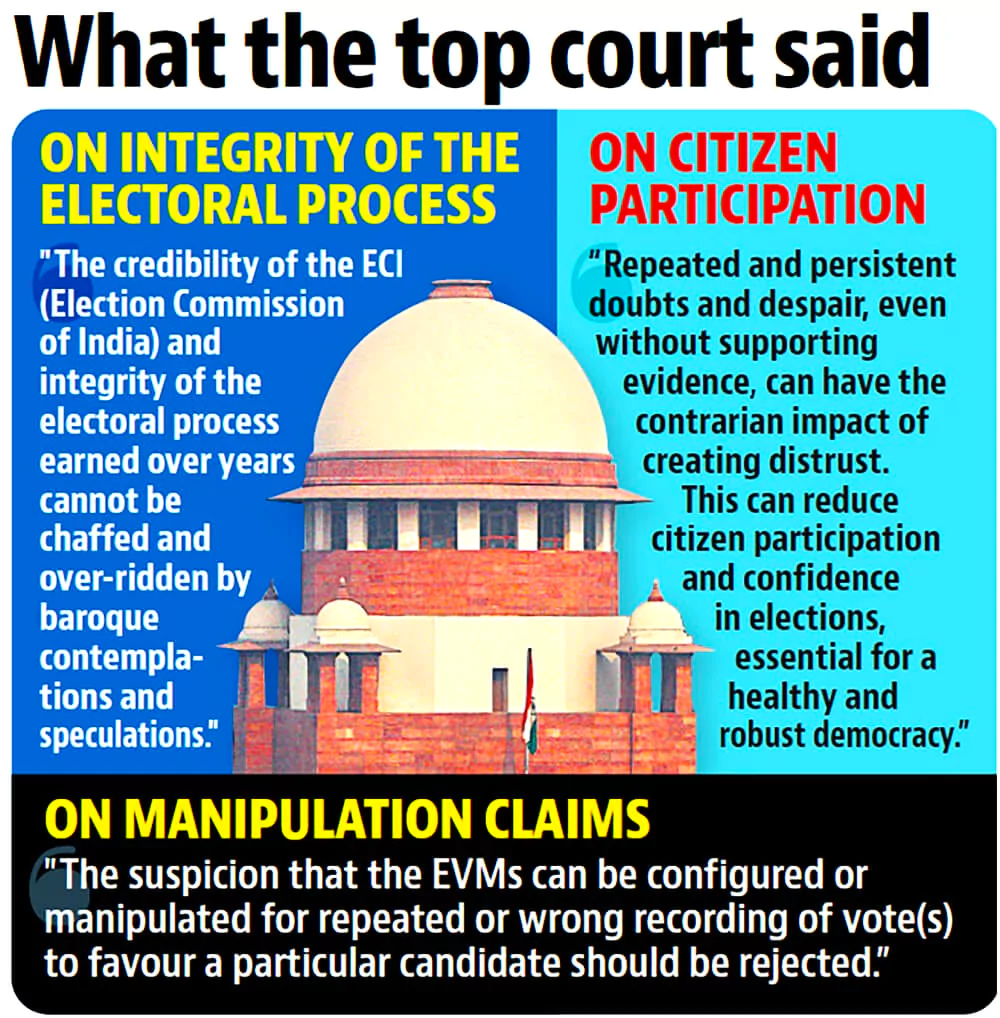 VVPATs were introduced after the judgment in Subramanian Swamy v. Election Commission of India case.
VVPATs were introduced after the judgment in Subramanian Swamy v. Election Commission of India case.
About Electronic Voting Machine (EVM)
About Voter Verifiable Paper Audit Trail (VVPAT)
About Ballot Paper System
|
In the Indian context, keeping in view the vast size of the Indian electorate of nearly 97 crore, the number of candidates who contest the elections, the number of polling booths where voting is held, and the problems faced with ballot papers, there is a need for improvements in the EVMs or even a better system that people would look forward to in the ensuing years. The “voices and choices” of the electorate should be fortified through open dialogue, transparency and trust.
| Must Read | |
| NCERT Notes For UPSC | UPSC Daily Current Affairs |
| UPSC Blogs | UPSC Daily Editorials |
| Daily Current Affairs Quiz | Daily Main Answer Writing |
| UPSC Mains Previous Year Papers | UPSC Test Series 2024 |
<div class="new-fform">
</div>
